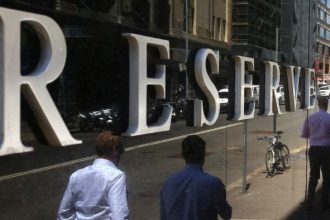Elke Reva Sudin is a Brooklyn-based visual artist and founder of Drawing Booth, a digital live sketch events company.
Anyone who has managed a creative project for their company knows miscommunication and frustration can arise between the creative team and the typical ways companies operate.
On one hand, you have your client’s traditional linear thinking that’s focused on the end result, and they’re attempting to exchange with a creative whose specialty is exploration and iterative processes. Tensions can arise even in the early stages when the client wants to see their concept magically answered in the project’s infancy.
The creative process is an exploration of revealing hidden potential first through a decay process and then expansion and newness. Think of how a seed contains the potential for the whole plant to grow but needs the proper conditions in order for that potential to be released. Try explaining a flower to your board without presenting what that looks like. You have the seed but need help to sprout it. I believe increasingly accessible artificial intelligence image-generative tools can help the business team come to realize their vision faster while helping save time and resources along the way.
At my company, which provides live digital sketches made by people, I’ve seen how clients will use AI before coming to us with mock-ups for a real artist to make. Through this experience, I’ve learned there are a few tips and strategies companies can use to work with AI tools and make the most of their creative teams.
Ideating With Imaging Apps
Imagine you are describing something you see to someone who can’t see what you are referring to. What colors are being used? How many people or items are in the image? What sort of lighting exists so you can see what is in the image? When using AI, it’s important that you are as detailed as possible. Furthermore, remember to:
1. Bring it into perspective. Play with the point of view from which you want the story of the image to be told. What view do we see? Is it far away or up close? Is it from a bird’s eye view, a fly on the wall or from within the main subject? For instance, when viewing a cityscape, is your perspective from a building top, from across the river or from the ground and you’re looking across or down or from behind a streetlight?
2. Consider the visual language of the message. Understand if what you want is ultimately through photography, illustration or somewhere in between. Think of the difference between an animated infographic and a live-action realistic rendered image.
3. Take it to the next level. Push your idea further, and go more extreme. The results are immediate when using AI. Play out 50 different scenarios by asking challenging questions so you know your comfort zone from the get-go.
4. Be playful when sourcing your (human) creatives. You might have an in-house team or someone you have worked with for years, or you might be looking for a new vendor to help bring your vision to reality. What the end format experience entails will help you source your vendors. Consider how you plan to export your vision, such as printing on a unique material or whether you’ll make your image move, for example.
Finding A Balance Between AI And People
From my perspective, AI can be particularly effective in the brainstorming stage and help you ideate a subject and setting efficiently. Use specific keywords to help guide the AI, and don’t get hung up on a wrong turn. The models learn as you do, so, just like with real creatives, they learn to work together.
The second use of image-generative AI is in choosing a style. AI makes it easy to play with various styles before committing to one. However, be careful that your AI-generated image isn’t using styles by artists without attribution; be respectful that what the AI comes up with is likely based on real or digitally created artwork by a real individual.
As well, don’t overlook the value the creativity of your team can still bring. I believe there’s a continued need for human creatives for the same reason why it feels so satisfying to get a customer service agent on the phone: A real person can help fill in the gaps in what you seek and provide you with solutions. In addition to that, if you can’t describe your problem accurately to AI, it can be frustrating and confusing.
You can consider working with human creatives to help interpret what is on the tip of your tongue and give edits to your changing mind. They have a sensitivity to what is going to make sense for the voice of your company, and they can see things from the user’s perspective. Humans know how humans work. They will be able to tell right away if something doesn’t feel intuitive for another person. Creatives can envision your mockup in another context or approach or flip the idea on its head. Instead of thinking about what could be printed on a coffee mug, a creative might be able to imagine how your project can provide viewers with the experience of the coffee.
Overall, allow your creative team to lead you on a journey to an abstract place while keeping you on the path established by the personality of your company.
The Hidden Relationships
I often explain that the way artists can come up with such out-of-the-box thinking is that they absorb many dimensions of information around them. Visuals are broken down into their properties. Relationships between a variety of techniques and hidden stories become strategies for artists to employ. AI image-generative tools operate in a similar way, and getting comfortable with the idea that you need to teach the AI how to unfold your vision is humbling to its limitations as well as your own.
It might be overwhelming to start exploring the ever-changing world of image-generating AI, but with curiosity and a willingness to make something incorrect or ugly, you have the potential to understand your own creative strengths.
Forbes Business Council is the foremost growth and networking organization for business owners and leaders. Do I qualify?
Read the full article here





